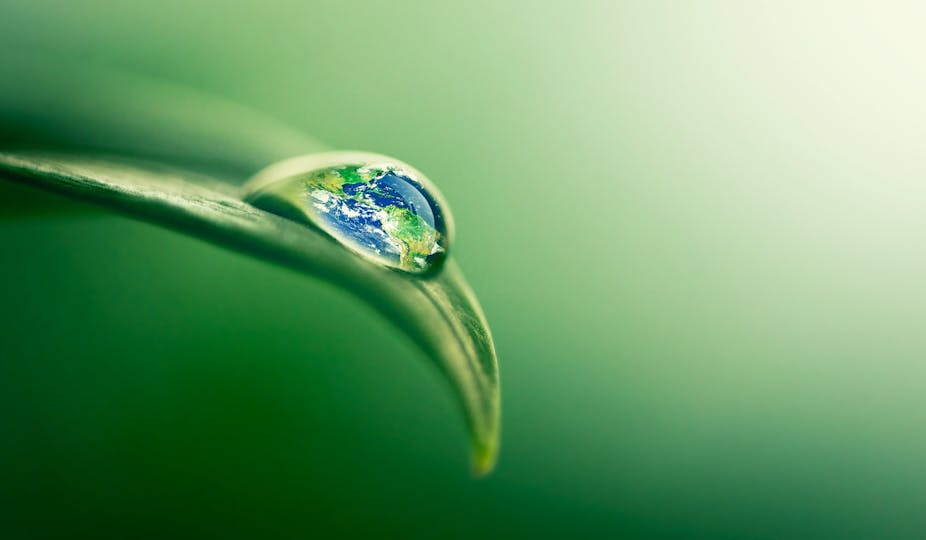Life existed without human beings for more than 99.9% of Earth’s history. Yet we often ignore the achievements of species that preceded us by billions of years.
I explore the concept of nonhuman civilisations in my new book, Biocivilisations, which retells the story of life acknowledging the contributions of other species. Bacteria, plants, fungi, insects, birds, whales and other species demonstrate language, engineering, science, medicine, agriculture and more. These are all elements of civilisation that we associate with humans.
Speaking nature’s language
Whales communicate with each other using a series of sound clicks called codas. Sperm whales seem to announce themselves using a unique click sequence, or name. By pooling their acoustic datasets, an international team of 27 researchers studying Pacific Ocean sperm whales identified seven sperm whale vocal clans, each with their own dialect and identity codas. Now, scientists from around the world are collaborating as part of the Cetacean Translation Initiative to use powerful AI algorithms and decode the language of sperm whales.
Plants communicate with each other using hormones such as jasmonate, which redirects resources from growth to repairing damage. They release hormones into the air when in distress, such as when insects attack them. Neighbouring plants then pick up on the signal and respond by preparing for attacks – for example, by releasing toxins to ward off the insects.
Meanwhile, bacteria have been “talking” to each other for billions of years by exchanging chemical messages via hormone-like molecules called autoinducers. They use these chemicals to synchronise action. For example, bacteria may only invade a cell if enough neighbouring bacteria are releasing autoinducers. This is called quorum sensing.
Bacteria also communicate with the cells of other species, including ours. Recent research showed certain chemicals that bacteria release influence the development of our brains, allowing the brain tissue to mature properly. Studies into premature babies have shown the relationship between gut bacteria and human cells are crucial for cognitive development.
Skilled engineers
Our planet also reverberates with construction noise. It is a permanent building site where bacteria, insects and humans alike create cities.
The engineering skills of honeybees are so sophisticated that a honeybee expert and a group of engineers used an algorithm inspired by honeybees to resolve internet traffic problems. They copied the process bees use to distribute foragers searching a floral field for nectar.
Bacteria are skilled engineers too. In one study, scientists used powerful microscopes and time-lapse imaging to record the city-building skills of a bacterial species that lives in human mouths, Streptococcus mutans. Bacteria produce their own building materials when they settle at a new site, normally a hard surface. These materials include carbohydrates, proteins and even DNA secreted by their tiny bodies. The building material is carefully distributed so that the village structure acquires a three-dimensional shape.
Some of these bacteria-settlers remain stationary and meld themselves to the surface that the village is built on, enhancing its structural stability. Bacteria can also move within villages and divide their bodies to increase the population. Villages grow, join together and form bacterial cities and megacities – much like modern London is a collection of former villages and towns.
The communication between bacterial megacities is conducted through electrical impulses. Indeed, the entire planet was turned into a kind of bacterial internet three billion years ago.
Doctors and surgeons
Arguably, bacteria were also the first practitioners of medicine. Viruses invade bacteria and hijack their cellular machinery to make copies of themselves – a process which kills the bacteria. So, three billion years ago, bacteria became “epidemiologists” to defend themselves.
Bacterial bodies produce enzymes that attack and kill virus DNA, a technique known as Crspr. It can target a section of DNA, bind to it and turn the gene off. Scientists only recently discovered this system, and in future hope to use it for cancer treatments and to cure genetic conditions. It has already been used to make COVID-19 detection tests.
Some people think of ants as tiny insects barely worth thinking about. But ants from the species Megaponera analis, found in sub-Saharan Africa, are talented surgeons. These warrior ants specialise in raiding termite nests. The larger ants, majors, break termites’ defensive mud barriers, then their smaller colleagues, minors, rush through these openings to pull termites out of the nest.
After the raids, the ants form orderly columns again and majors carry dead termites back to the ant nest. But entomologists noticed that some majors also transport injured ants, while others treat their comrades’ wounds with antimicrobial chemicals secreted by fellow ants’ glands.
The ants also use their powerful mandibles to remove termites that are clinging to warrior ant bodies by their teeth, and to stitch wounds. These ant surgeons were so effective that patients were spotted on the battlefield the next day.
Successful farmers
Farming in the way humans know it is planting, protecting and harvesting crops for nourishment. Research shows that the soil fungus Morchella crassipes also does this to the bacteria Pseudomonas putida for its carbon, which the soil fungus needs to grow.
In turn, ambrosia beetles transport fungus spores in a pouch-like structure in their gut to tunnels bored into trees. Ambrosia fungi produce asexual fruit only in the presence of the beetles. This fruit is their sole food source, and the beetles even remove “weed” fungus.
Leafcutter ants also farm fungi from the genus Leucoagaricus, and even use antibiotic bacteria to protect their crops from parasites. Ants don’t just stick to agriculture, though; they herd aphids too. Just as we humans milk cows, ants “milk” aphids for the nutritious honeydew they produce.
So, these tiny beings were all farmers millions of years before humans had even thought of it.
Human civilisation is the most recent addition to an ever-changing landscape of ancient societies. Learning to value nonhuman civilisations may help reveal the ancient wisdom of species that preceded us. In so doing, this newly discovered wisdom could help us resolve the environmental crisis caused by our civilisation.

